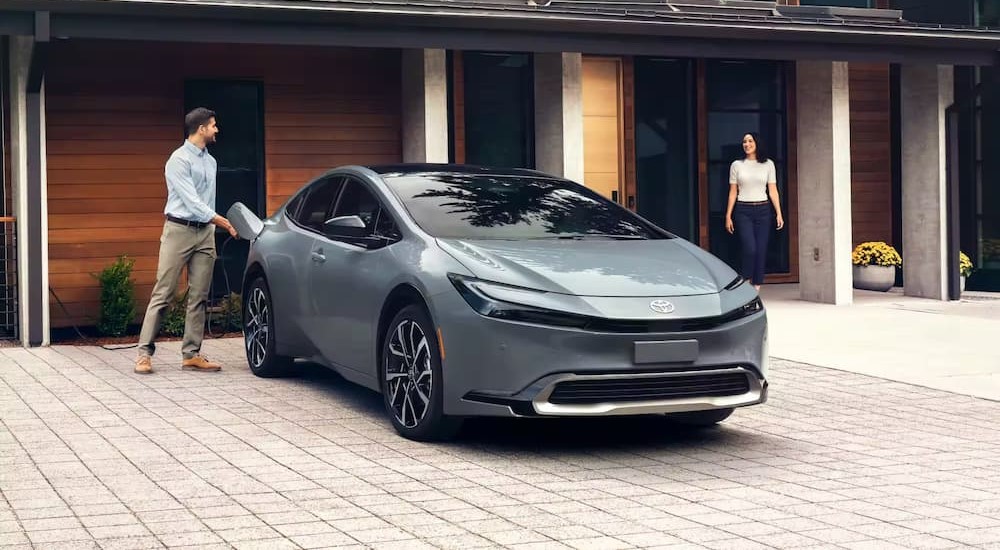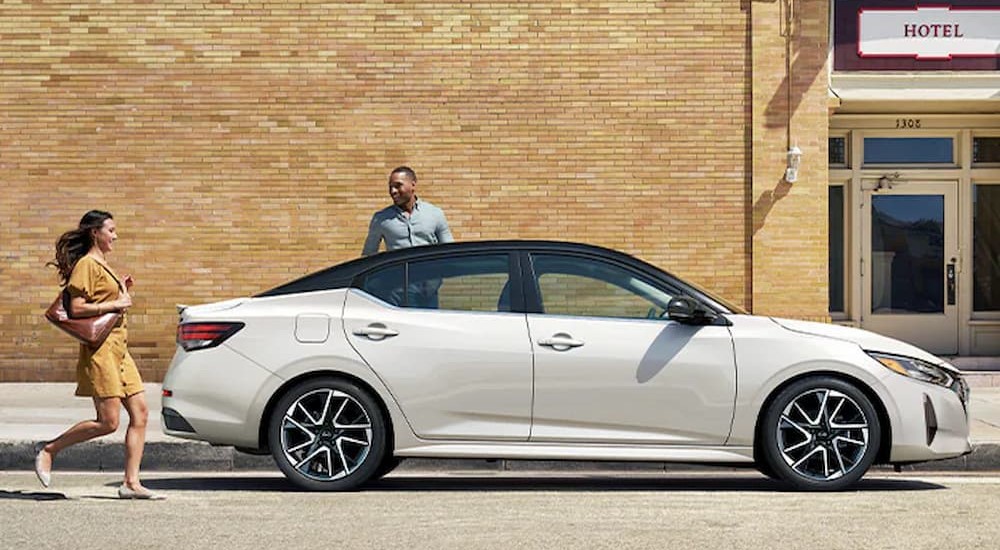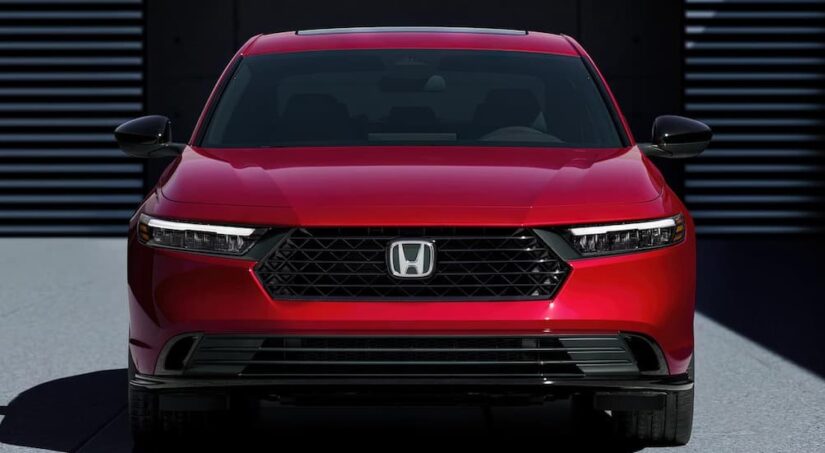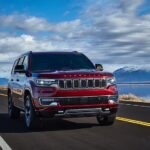Once upon a time, driving a vehicle for hire required special licensing, a taxi medallion, and—in the case of a limousine—a snappy black suit. That all changed when popular rideshare services like Uber and Lyft debuted in 2009. Like Doordash and Airbnb, Uber and Lyft turned a well-established industry on its head, and while we can debate the relative pros and cons of this sort of startup disruption, the modern rideshare industry is here to stay. The question now is, how can you take advantage of it?
Driving for a rideshare service can be a profitable endeavor, whether you’re embracing it as a full-time gig or just looking to make a little extra cash on the weekends. The average rideshare driver earns between $18 to $25 an hour, though with the right market and strategies, it’s not uncommon for drivers to earn as much as $50 an hour.
Of course, turning a profit all depends on your overhead. The biggest expense to consider is what sort of vehicle you’re driving. The right ride can turn you into a five-star favorite, while the wrong choice can leave you questioning the decision to sacrifice your nights and weekends.
To that end, I’ve compiled a short guide for prospective rideshare drivers. From basic vehicle requirements and the qualities that make for a good rideshare vehicle to specific makes and models that will help you find success in the competitive industry, read on as I review some of the keys to rideshare success.
Basic Rideshare Vehicle Requirements
In order to ensure a safe and consistent experience, rideshare companies require vehicles to meet a certain set of standards. From capacity and age to mechanical condition and aesthetic requirements, a prospective rideshare vehicle has to be up to snuff before you start picking up passengers. Let’s take a few minutes to review some of these requirements so that you’ll know what to look out for when shopping around for a rideshare-worthy vehicle…
Age: Vehicle age is one of the first things to keep in mind when considering a career as a rideshare driver. While the specific requirements vary by company, region, and level of service, both Uber and Lyft generally demand that a vehicle be no more than 15 or 16 years old.
The standards become even more stringent if you’re looking to drive for a premium service like UberBlack, which requires all vehicles to have been produced within the last six years. Uber Premier has the same six-year standard, while UberSUV limits prospective vehicles to five years. Lyft’s age guidelines depend on what city or state you’ll be driving in, but the company provides a handy guide right on its website.
Doors and Seatbelts: Packing your riders into a cramped two-door model is no way to earn a five-star rating, which is why both Uber and Lyft require their vehicles to have four doors. In order to be eligible for Lyft or Uber, a vehicle must have five seat belts, though Lyft also caps the number of seat belts at eight.
Title and Inspection: A clean title is key if you hope to get on your rideshare grind. Both Uber and Lyft reject vehicles that have salvaged, reconstructed, or rebuilt titles, which makes a lot of sense from a safety and reliability perspective. If you live in a state that requires annual vehicle inspections, your ride will also have to earn its sticker. Again, you’ll want to check in on your local laws when it comes to this requirement. A majority of states don’t require vehicles to pass inspection, but 15 states require annual inspections, and five states stick to a biannual schedule.
Condition: Even if you live in a state that doesn’t require regular vehicle inspections, that doesn’t mean any old car, truck, or SUV can be used for ridesharing. Uber and Lyft both state that prospective vehicles must be in good condition, have working windows and air conditioning, and feature no commercial branding; however, the specific requirements vary based on what level of service you’re looking to provide.
Standard Uber or Lyft drivers might be able to get away with a vehicle that’s not absolutely pristine; however, if you want to drive for UberBlack or Uber Premium, it’s a different story altogether. Uber Premier and UberBlack vehicles must have leather seats, while the latter literally needs to be black both inside and out.

What Makes a Good Rideshare Vehicle?
Reliability: Reliability is an important factor to consider when shopping for any new or used vehicle, but it’s especially pertinent when you’re in the market for a car, truck, or SUV that can be used for ridesharing. Mechanical issues and maintenance tasks are annoying when you’re dealing with your daily driver, but they can seriously cut into your profits if your vehicle moonlights as a rideshare. Between the repair costs, downtime, and a potential rating-decimating breakdown, an unreliable vehicle can really cost you.
Toyota and Honda tend to dominate most rankings of recommended rideshare vehicles. That has to do with their record for reliability. Toyota—and its Lexus luxury sub-brand—routinely top the list of most reliable automakers on the market, earning a stellar 76 and 79 rating in a 2023 study by Consumer Reports, whereas Honda and its Acura luxury brand follow close behind with a rating of 70. Reliability will also help to offset the deprecation that’s inherent to every vehicle, allowing drivers to maximize trade-in value and making for a relatively solid investment.
Fuel Economy: If you’re looking for a little high-speed fun or are choosing a vehicle based on it’s off-road ability or towing capacity, fuel efficiency might not be on the top of your list when shopping for a new ride. That all changes when picking a good rideshare vehicle. Running a rideshare operation is all about maximizing profit. The less you spend on fuel, the more cash you’ll take home at the end of the night—so leave the gas-guzzlers behind and opt for an efficient vehicle when you’re getting into the rideshare game.
A vehicle that averages 20 MPG will cost around $1,000 less to operate each year than one that gets closer to 30 MPG. Compact models, hybrids, and EVs have an obvious advantage in this arena, but some smaller crossover SUVs also stack up pretty well in terms of overall fuel economy.
Passenger and Cargo Space: A roomy ride can make all the difference when you’re trying to operate as a rideshare vehicle. Opting for a larger vehicle—especially one with three rows of seating—can mean the difference between snagging a ride and missing out. A roomier cabin will allow you to transport more riders and maximize comfort, which are both important when trying to maintain a solid rating. Cargo space is also an important consideration, particularly in areas where a lot of rides are headed to an airport with a full complement of luggage.
Insurance: The fancier or more expensive a vehicle, the more it typically costs to insure. If you’re aiming to cater to a certain type of clientele, a luxurious ride could put you at an obvious advantage, but you need to weigh the potential profits against your insurance payment. Reliable vehicles—and those packed with the latest and greatest in safety and advanced driver assistance systems (ADAS)—tend to be more affordable than their competitors when it comes time to pay that insurance premium.
Passenger Demands: Like any business, the customer is king when you’re driving a rideshare vehicle. When doling out their end-of-ride ratings, riders don’t tend to consider factors like fuel economy, reliability, insurance costs, and the like. What they do consider is the experience they just had and whether or not it met their expectations.
Comfort and convenience features can make or break this experience, which is why features like heated seats, USB ports, wireless charging pads, stereo systems, upholstery, and a well-functioning air-conditioning and heating system should never be treated as an afterthought. The right creature comfort can help you land that vaunted five-star rating, whereas getting the most bare-bones model can leave riders feeling a little unsatisfied.
Best Midsize Sedan: Honda Accord
Even if you only considered its rock-solid reliability and 32 MPG combined, the Honda Accord would still be a standout in the midsize segment. Factor in the Accord’s refined styling, spacious interior, and low price, and it’s no wonder it has become a staple of the rideshare industry. Plush seats and a cavernous 16.7-cu.ft. trunk raise the Accord’s comfort and utility profile, as does the available 12-speaker Bose stereo system and Honda’s comprehensive Honda Sensing ADAS suite.
Those seeking an even more efficient version of the Accord can opt for the hybrid model, which replaces the turbocharged 1.5-liter four-cylinder engine with a 2.0-liter four-cylinder and two electric motors to give the sedan a superb 51 MPG in the city and 48 MPG on the highway. The hybrid powertrain is limited to the Sport, EX-L, Sport-L, and Touring trims and pushes the price above $30,000, but when you factor in the potential fuel savings, it’s well worth the splurge. The Accord has also earned a reliability rating of 81 from JD Power, which should give you some valuable peace of mind.
Best Hybrid: Toyota Prius
The Toyota Prius has a lot going for it. Between Toyota’s ironclad reputation for reliability and the Prius’ hybrid powertrain, this compact is hard to beat for those seeking a dependable rideshare vehicle. Fuel economy is the obvious selling point for the Prius, with the hybrid powertrain achieving an impressive 57 MPG combined; that means less money at the pump, not to mention less time spent losing rides to an unfortunately timed refueling stop.
Performance has never been the forte of the Prius, but Toyota has given this hybrid a little boost in recent years that sees the economical car achieve nearly 200 hp. Add in a comfortable cabin with up to 20.3 cu.ft. of storage room behind the rear seats, and it’s hard to make an argument against the granddaddy of all hybrids.
Speaking of age, the Prius vintage actually works in its favor. The Prius has also been on the market for a lot longer than the average hybrid model, which means plenty of options to choose from when you’re searching the pre-owned market. With the Prius’ low monthly insurance payment and an estimated $4,800 ten-year ownership cost, this hybrid is a well-rounded option that’s sure to help you maximize your earnings.

Best Budget Option: Nissan Sentra
If you’re looking to launch your rideshare career on a budget, look no further than the Nissan Sentra. This affordable compact starts at just over $22,000—an impressive figure that easily makes the Sentra one of the best values on today’s market. So, what do you get for that suspiciously low price? The Sentra isn’t going to deliver any edge-of-your-seat thrills, but when it comes to the metrics that matter most in a rideshare vehicle, the Sentra certainly holds its own.
Rated at 28 MPG in the city and 37 MPG on the highway, the Sentra is an economical little ride thanks to its 2.0-liter four-cylinder engine and ultra-efficient continuously variable transmission (CVT). Nissan might not be able to boast the reliability rating of a Toyota or Honda, but the Sentra still manages a thrifty ten-year ownership cost of just $5,441. The Sentra offers more cargo room than the Toyota Corolla at 14 cu.ft., and it’s styled with a handsome cabin that defies its rock-bottom price.
Throw in standard Zero Gravity front seats, optional quilted leather upholstery, and a long list of driver assistance technology like adaptive cruise control, a 360-degree camera system, forward-collision warning, and automated emergency braking, and it’s easy to see why the Sentra was named JD Power’s top compact car of 2022.
Best EV: Tesla Model 3
Tesla revolutionized the EV segment when it started producing its line of stylish, performance-minded EVs back in 2009. While the brand’s novelty has diminished a bit since those early days, pulling up to the curb in a Tesla can still give you a bit of an edge in the rideshare world, especially among eco-conscious riders. The Model 3 represents Tesla’s most affordable offering at $40,630 for the 2024 model, but the compact’s value doesn’t end with its starting price.
The Model 3 can travel for up to 272 miles on a single charge, which can add up to a lot of dollars and cents when you’re spending long nights as an Uber or Lyft driver. This Tesla also boasts the most elegant cabin on our list, with a sleek, minimalist design and a massive touchscreen display that serves as a command center for the sedan’s various systems and functions.
The lack of a traditional powertrain means the Model 3’s interior is exceedingly roomy, leaving passengers plenty of room to stretch their legs and providing 15 cu.ft. of cargo volume. That’s enough room for up to 15 carry-on suitcases, which should make you a popular choice for travelers looking for a rideshare that’ll get them to the airport with all their souvenirs in tow.
Best Three-Row SUV: Kia Telluride
If you’re looking to cater to larger parties, a three-row SUV is a must. Sure, you might end up paying a little more at the time of purchase and spend some extra time (and money) at the gas station, but the ability to accommodate up to seven passengers can open the door to larger rides like those offered by UberX Share.
Choosing between three-row SUVs isn’t really that difficult when you do some research. The Kia Telluride is among the best values on the market, racking up awards like Best 3-Row SUV for Families and Best 3-Row SUV for the Money from US News & World Report. Powered by a brawny V6 that puts out 291 hp, the Telluride has plenty of power while still providing an EPA-estimate 20 MPG in the city and 26 MPG on the highway; that’s pretty decent for the midsize crossover segment, but it’s the SUV’s 21 cu.ft. of cargo space and a roomy second row that really set it apart.
Riders will appreciate the Telluride’s surplus of charging options, with five USB ports spread throughout the cabin. This SUV also features some unique gadgets that should gel with the rideshare lifestyle, including a ten-speaker Harman Kardon audio system, a wireless smartphone charger, and a Driver Talk feature that’ll allow your voice to be piped directly to distant third-row passengers.
Getting Into the Rideshare Game
Operating your vehicle as a rideshare can be a great way to drum up a little extra money, but choosing the right vehicle is important when it comes to making bank. Investing in the wrong car, truck, or SUV could have you struggling to make ends meet, but it all comes down to knowing what factors to weigh when choosing your next vehicle.
Reliability, price, age, condition, and available features all play a part, as do fuel economy, insurance rates, and the unique demands of riders in your market. The type of vehicle that might do well in the busy streets of NYC might fare a lot less well in more rural communities, so before picking out a rideshare vehicle, do a little research, chat up your next Uber driver, and try to learn from their experience.
When in doubt, it’s never a bad idea to stick to popular models from Toyota, Honda, and the like. These vehicles have become some of the industry’s most popular models for a reason, and those same qualities that have allowed them to climb the sales charts should serve you well when you’re looking to break into the rideshare industry.



